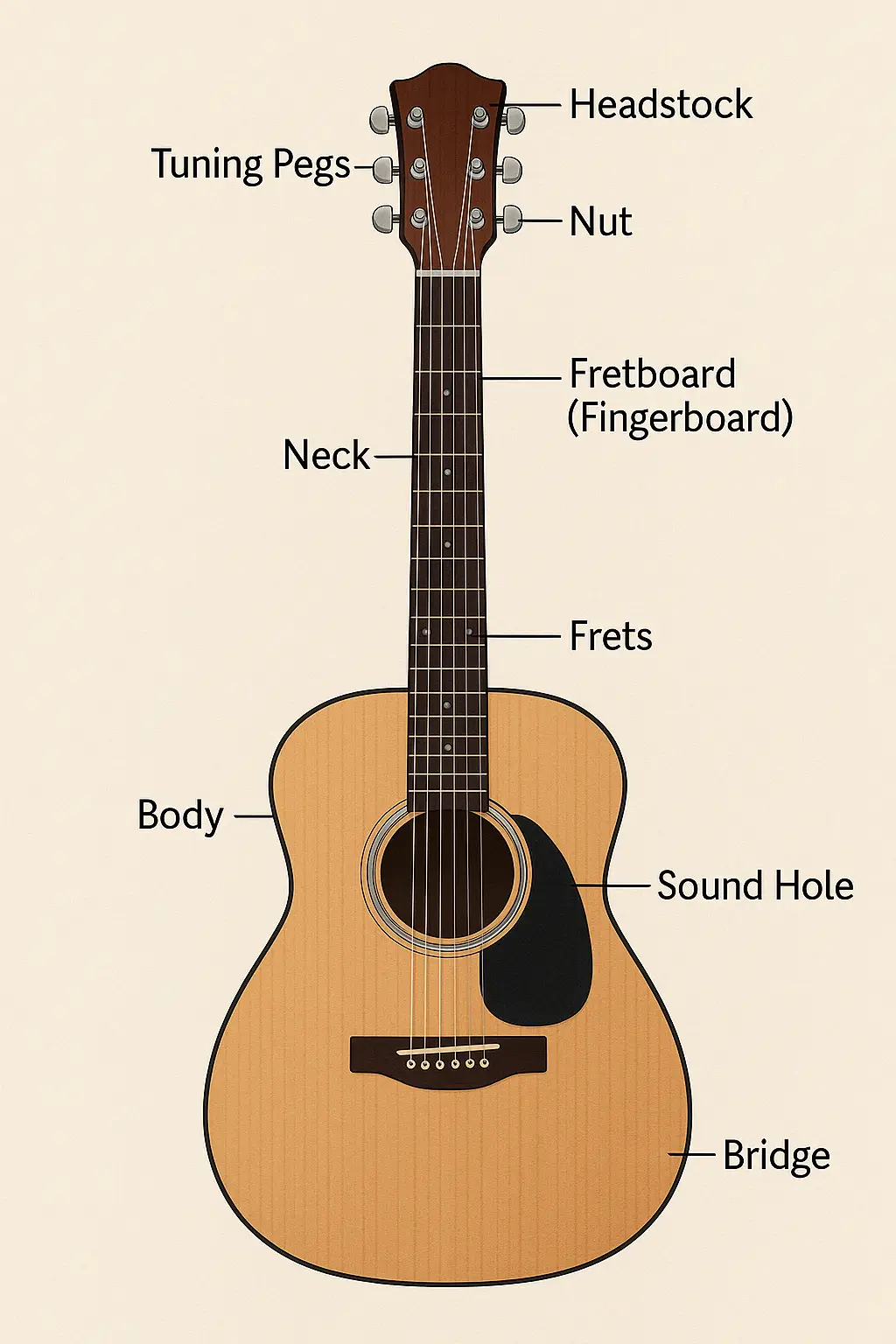Learn the Parts of the Guitar - Essential Beginner Guide

2025-04-17
Whether you just picked up your first acoustic or electric guitar, understanding the parts of your instrument is essential. Knowing the names and functions of each component not only makes learning easier but also helps when tuning, stringing, or talking to other musicians. This guide breaks it all down so you can play and communicate with confidence.
Why You Should Learn the Parts of the Guitar
Imagine trying to learn to drive without knowing what a steering wheel or brake pedal does. That’s what it’s like trying to learn guitar without knowing its parts. Once you understand the anatomy of your guitar, you’ll find lessons, repairs, and communication with other musicians much easier.
The Main Parts of the Guitar (Both Acoustic & Electric)

1. Headstock
The headstock is located at the top of the guitar and houses the tuning pegs or machine heads. These are what you turn to adjust the tension of each string, thereby tuning your guitar.
2. Tuning Pegs
Also called tuners or machine heads, tuning pegs control string tension. Turn them clockwise or counterclockwise to tighten or loosen each string.
3. Nut
The nut is a small piece of plastic, bone, or metal that sits between the headstock and fretboard. It holds the strings in place and slightly raises them to the correct height over the fretboard.
4. Neck
This is the long wooden piece that extends from the body of the guitar. It includes the fretboard and allows your fretting hand to change notes and chords.
5. Fretboard (Fingerboard)
Attached to the neck, the fretboard contains metal frets spaced at specific intervals. You press the strings down against these frets to produce different notes.
6. Frets
Thin metal strips embedded in the fretboard. When you press a string just behind a fret, it shortens the vibrating length of the string to produce a different pitch.
7. Body
The main section of the guitar. For acoustic guitars, the body is hollow to amplify sound naturally. For electric guitars, the body is solid and requires electronic amplification.
8. Sound Hole (Acoustic Only)
Found on acoustic guitars, this round hole allows the vibrations of the strings to resonate through the guitar’s body, producing a louder, fuller sound.
9. Pickups (Electric Only)
Pickups are magnets wrapped in wire that “pick up” the string vibrations and convert them into an electric signal. These signals go to your amp, allowing you to hear your guitar at performance volume.
10. Bridge
The bridge is where the strings are anchored to the guitar body. It plays a big role in tone, string action (height), and sustain. Acoustic bridges are typically made of wood; electric ones can include saddles and tremolo systems.
11. Pickguard
A piece of plastic or synthetic material mounted to the body that protects it from being scratched by a pick during strumming.
12. Controls (Electric Only)
Volume knobs, tone knobs, and pickup selectors allow you to change how your guitar sounds. Some guitars even have coil-split switches or kill switches for special effects.
Bonus Tips: Label Your Guitar
Print a diagram of your guitar and label each part as you go. It reinforces learning and builds visual memory. Better yet, use masking tape to label your physical guitar (temporarily!) to drill the names during practice sessions.
What's Next After Learning the Parts?
Once you’re familiar with your guitar’s anatomy, you’ll be able to:
- Follow lessons more easily
- Communicate with other players and teachers clearly
- Maintain and restring your guitar properly
- Understand tone and playability based on gear and setup
Learning the parts of your guitar is like getting to know a new friend. The better you know it, the more it will give back to you—through tone, ease of play, and creative joy.
Ready to take the next step?
Explore our Beginner Strumming Patterns or How to Tune Your Guitar articles for your next skill boost.